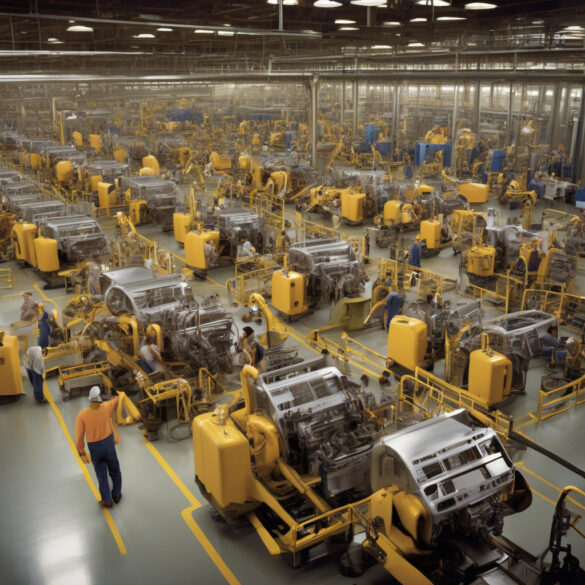Navigating the US Manufacturing Slowdown: Adapting to Structural Shifts and AI Investment
The US manufacturing sector has been experiencing a slowdown in recent times, indicative of broader structural shifts and a post-boom normalization period. This deceleration is further influenced by the escalating trade tensions and tariff pressures, which have added complexity to an already intricate landscape. However, amidst these challenges, there lies a significant opportunity for growth and innovation, particularly through the rising investment in artificial intelligence (AI) technologies.
One of the primary drivers of the manufacturing slowdown is the ongoing structural transformation of the industry. As global markets evolve and consumer preferences shift, manufacturers are compelled to adapt their operations to remain competitive. This adjustment period often leads to a temporary slowdown as companies reposition themselves in response to changing market dynamics.
Moreover, the post-boom normalization is a natural phase following a period of rapid expansion. The manufacturing sector experienced significant growth in the aftermath of the 2008 financial crisis, driven by factors such as low-interest rates and technological advancements. As the industry reaches a more mature stage, a slowdown is to be expected as growth rates stabilize and normalize.
In addition to these overarching trends, the current geopolitical climate, characterized by trade tensions and tariff pressures, has introduced further uncertainty into the manufacturing sector. The imposition of tariffs on key imports and exports has disrupted supply chains and added costs to production, impacting the overall growth of the industry.
However, amid these challenges lies a silver lining in the form of increased investment in AI technologies. As manufacturers seek to enhance efficiency, reduce costs, and improve quality, many are turning to AI-powered solutions to streamline their operations. From predictive maintenance to automated quality control, AI is reshaping the manufacturing landscape and driving a new wave of innovation.
For example, predictive maintenance systems powered by AI can help manufacturers anticipate equipment failures before they occur, minimizing downtime and reducing maintenance costs. Similarly, AI-driven quality control processes can identify defects with greater accuracy and speed than traditional methods, ensuring that only the highest quality products reach the market.
Furthermore, AI technologies enable manufacturers to optimize their production processes, improve inventory management, and enhance resource allocation. By harnessing the power of data analytics and machine learning, companies can make informed decisions that drive operational efficiency and profitability.
In conclusion, the US manufacturing slowdown is a reflection of broader structural shifts and post-boom normalization, exacerbated by tariff pressures and trade tensions. However, by embracing AI investment and leveraging the transformative potential of technology, manufacturers can navigate these challenges and position themselves for long-term success in an increasingly competitive global market.
#USManufacturing, #AIInvestment, #StructuralShifts, #TariffPressures, #ManufacturingInnovation
